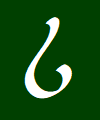Elven names are not like our names these days, where we don’t know what our names mean without hefty amounts of research, and our names were chosen from lists of pre-existing, traditional names. Elven names have meaning, and an Elf, upon hearing for the first time the true names of another elf (the first and second names), would know a lot of information about whom they were meeting. They’d know who their father or mother was, and a defining characteristic or interest of the person. When we meet and exchange names, we learn very little about the person we’ve just met from the name alone. In fact, it’s more likely that we’d learn something about the person’s parents than the person themselves. This part of Elven culture is very different from our own. If you want your Elven characters to behave truly elf-like, then read up!
The First Name
The first name an Elf receives in his/her life is the “Father-Name.” We don’t know the Quenya term for this name, but we can guess that it is “Ataresse.” It is one of the “Anessi” or “Given-Names” that the Elf will receive in their life. It is as close as the Elves get to a surname.
- It is given soon after birth.
- It’s announced by the father in a ceremony called “Essecarme” or “Name-Making”.
- The name itself is usually made from one of the parent’s names. If the child is a boy, it will be fashioned after one of his father’s names; if it’s a girl, it will be fashioned after one of her mother’s names. It is not unheard of for girls also to have names fashioned after their fathers’ or boys to have names fashioned after their mothers’, or to have a name fashioned after a grandparent’s name. This name is sometimes based off of who is more well known in the family.
- The name can be modified later to better fit the personality of its bearer, though it will still be modeled after the parent’s name.
- There are three ways that this name is formed.
- Simply using a parent’s name. This sort of father name didn’t last long, and would be changed to better match the child’s personality.
- A patronymic suffix (-iel/-ien “daughter of” or -ion “son of”) added to the parent’s name. This also often ended up changed.
- The most common way is to use a different name suffix or only part of the parent’s name.
- It is the first name listed when telling someone his/her full name.
- This name was considered a public name. Anyone could address the Elf by it.
The Second Name
The next name an Elf has could either be his/her “Mother-Name” or the “Chosen-Name.” It’s more likely that the Mother-Name would come first, as often they are given before the elf is old enough to name themself. The Mother-Name is called “Amilesse” in Quenya, and it is one of the Anessi. There are two types of Mother-Name.
- This sort of name may come from a vision the mother receives in the hour of birth. This sort of vision isn’t all that common, so these names are rare and important gifts.
- The most common is the “Amilesse Tercenye,” a “name of insight.” “Insight” refers to insight into the child’s personality. This sort of name may be given while the child’s personality is starting to develop, a few years after the child’s birth.
- The second type is the “Amilesse Apacenye,” or “name of foresight.” She names her child from a vision of the future.
- The last type comes from getting to know the child as his/her personality develops, which means it could come after the Chosen-Name. It is also called an Amilesse Tercenye.
- This name is also considered a public name, and it is listed after the Father-Name when giving one’s full title.
The Chosen-Name, or “Cilmesse,” is a name that a child chooses for him/herself, once he/she is capable of “Lámatyávie.” This basically means that the child is fluent in their mother tongue and knows how to make beautiful sounding names. It also means that the child’s personality has developed to the point that the child knows and can name his/herself. The age that the child reaches this fluency and understanding is somewhere between 7 and 10 years of age. Since gaining individuality is an important achievement in the child’s life, there is a ceremony to go with announcing it, called “Essecilme,” or “Name Choosing.”
- The name has something to do with the child’s personality or talent(s).
- It can be changed as time passes, as the person’s personality and interests change over time, but this is very rare.
- This name is a private name. The only ones allowed to address someone by their Cilmesse are close family members, one’s closest friends, and one’s spouse. To address someone you aren’t in an intimate relationship with by this name is extremely rude.
- It also is one of the names listed when telling someone his/her full name. It can come before or after the Mother-Name.
- Adopting the Mother-Name as the Chosen-Name is a common practice. In fact, if there was a Mother-Name, it most likely would be the Elf’s Chosen-Name as well.
- Cilmessi are supposed to be unique to the Elf, early on in history. As time goes on, and more names are taken up, names can be reused.
There is another type of Cilmesse, and it doesn’t get the fanfare that the above Cilmesse. It was an alias, if you will, and used to conceal one’s identity. This sort of Chosen-name will be made to look like another type of name, but other than that, doesn’t have any special characteristics.
The Third Name
The last type of name, called the “After-Name,” or “Epesse,” is one of the Anessi. Most of the time, it is little more than a nickname, though its making differs quite a bit from our own version of nicknames. It is a name that can be given by anyone; and sometimes the person being referred to is unaware of this name.
- It has meaning, and it isn’t based off of any of the Elf’s other names. It can be a title of admiration or honor, referencing an accomplishment or deed done by the Elf. It also can be descriptive of an odd or out-standing physical or mental trait.
- Because this sort of name isn’t considered one of an Elf’s real names, these names could be repeated, and more than one elf could be called by the same Epesse. That being said, they likely wouldn’t take another elf’s name to use as a nickname for a friend, because the Epesse would have a clear meaning connected to who they were naming.
- This name can be adopted into the Elf’s full title, and therefore is listed last.
- Due to the nature of the creation of this name, it is public, but not considered one of the Elf’s actual names until he or she adopts it.
- One type of Epesse is the name given by lovers to each other. It is the most often adopted Epesse. It should be noted that these names tend to be the most flattering.
- Some Epessi are names based on the names of places where the events occurred from which an Elf could earn a new name. Take the case of Elrond and Elros. They were abandoned in the woods and found in a cave with a waterfall over its entrance. “Elrond – Starcave” was found inside the cave, and “Elros – Starrain” was found playing in the water.
General Facts About Elven Names
- The first names of the parentless elves – the ones who woke up on the shores of Cuiviénen – generally didn’t mean anything. Most of them put -we at the end of their names, but the first element would be a random syllable that sounded cool and fit the phonology of their language. Sometimes their name would become a word for something they were well-known for later on.
- Elves don’t share their Father-Names when they marry. They could gain new Epessi from their spouses, however.
- Elves’ names change as the language around them changes. This is why Galadriel is known as Galadriel in the Third Age. Her name was originally Alatáriel. Though the language changed, the name’s meaning is still important, so it was translated into Sindarin.
- The names are listed in order of acquisition, like this: “Ataresse Amilesse/Cilmesse, also known as Epesse.”
- Elves never use the names of Eru, the Valar, or Maiar as their own. It’s considered trying to become or impersonate a god. Similarly, they aren’t named abstract concepts like “Justice, Mercy, Love, Victory, Life, Death” or the names of countries or natural things like “Star, River, Fire, Earth, Sea”. Names referencing these things usually indicate the person’s relationship with them, like Earendil (sea-lover) or Aulendur (servant of Aule). Names about one’s ethnicity or homeland are usually indirect references, like Legolas (green-leaf), which references his homeland (Mirkwood is called the “forest of green-leaf” in Sindarin) and his ethnicity as a Legel (green-elf). A name referencing something like stars or rivers and so on wouldn’t just be “Star” or “River”, but would be compound name, showing in what way the character is like the thing, like “Thranduil” (vigorous-river) who has a river running through his home. The name is suggesting that he’s energetic and strong as this river. Barring Ataressi, names are usually descriptive of the elf, often just an adjective with a name suffix added or a description of a specific characteristic. So, names like Artanis (noble woman) or Malaphinde (golden-hair) are the most common.
For an example, here are Galadriel’s and Feanor’s names.
When he was born, his father, Finwe, named him “Finwion – Son of Finwe.” When his talent for metallurgy started to show, his name was changed to “Curufinwe – Skill of Finwe.” His mother, who passed away, had insight into his character, and named him “Feanáro – Spirit of Fire.” He adopted this name as his Chosen-Name out of love and respect for his mother. When his father remarried, Feanor, who was angry with his father, defiantly took his mother’s name as his first name, Therinde, and started calling himself Therindion Feanáro. After his death in Beleriand, his name had to be changed into Sindarin for conversing with the Sindar. The pure Sindarin version of his name would be Faenor, but his Noldorin followers preserved the sound of his original name slightly, possibly because early on they had difficulty with the Sindarin diphthong AE, making the Feanor that we recognize in the stories.
When she was born, her father, “Arafinwe – Noble Finwe” gave his daughter the name “Artanis – Noble Woman.” Her mother gave her an Amilesse Tercenye, “Nerwen – Man-maiden” because she would grow to be as tall and fond of sports and hunting as a man. She adopted this as her Chosen-Name. The Epesse she received from Celeborn was in Telerin, “Alatáriel – Woman Garlanded with Radiance” in reference to her hair. She adopted this name into her full title, and translated it into Quenya: Altáriel. When she came to Middle-earth, she translated it to Galadriel, and thus we know her by this name.
Where to go for names of the Elves of Valinor:
Sources
The Lord of the Rings by Tolkien, Appendix F – The Languages and Peoples of the Third Age – Of the Elves
Morgoth’s Ring by Tolkien, Laws and Customs of the Eldar – Of Names
Parma Eldalamberon #17 & #21
The Peoples of Middle-earth by Tolkien, The Shiboleth of Feanor – Note on Mother-names
Unfinished Tales by Tolkien, Appendix E – The Names of Celeborn and Galadriel




